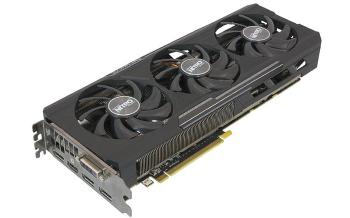Introduction
You know how HEXUS has taken a good look at the GeForce GTX 970 GPU? Notwithstanding the very minor real-world implications of arranging the 4GB framebuffer a certain way, ostensibly to maximise the benefits of the Maxwell architecture at a lower price point, GTX 970 has continued to sell in droves.
And why not? Retail partners bring a whole host of of capable cards to market from £250, and there's enough firepower to run the latest games at a lush 2,560x1,440 resolution. But hold on, because rival AMD has also made a play in the same marketplace with the revamped Radeon R9 390 card that is at direct financial loggerheads against the GTX 970.
The R9 390 is of interest again because just the other week we took a look at another partner GTX 970. The question of which offers better bang for your buck can't be made until an R9 390 partner card is put through its paces. Enter the Sapphire Nitro.
Sapphire goes after the GTX 970 in no uncertain terms with the Nitro card that's available in two flavours. The more basic version, in for review today, costing £250, is clocked at 1,010MHz core and 6,000MHz memory. The premium model uses exactly the same topside cooling but adds a backplate and increases core speed to 1,040MHz. You pay an extra £15 for this privilege.
The Nitro range focuses on value without giving up too many of the company-specific features that make Sapphire's cards a decent step up from the reference design. These include a fully-custom heatsink equipped with three dual-ball-bearing fans, black diamond chokes, longer-life capacitors, and three super-thick, 10mm heatpipes to wick away the heat more quickly. What's more, the card features Intelligent Fan Control II that stops the trio of fans from spinning at low loads.
The design cues share significant commonality with the dearer Tri-X line of cards. Indeed, having both cards in the labs is instructive insofar, externally at least, there is no difference. This is a Tri-X cooler whose gold accents are replaced silver ones in this instance.
A shade over 12 inches long from tip to toe and outfitted with two 8-pin power connectors, this is Sapphire inferring the card is ripe for overclocking. Though you wouldn't think so when looking at the specification sheet. Remember the 1,010MHz core clock? It's only 10MHz higher than what AMD mandates, while the 6,000MHz memory is at stock speeds. And like all premium 300-series boards, this one features 8GB of GDDR5 memory. On the upside, the meaty cooler should be able to keep the card ticking along at that 1,010MHz speed all of the time, rather than the 'up to' AMD prescribes.
On the other side Sapphire includes a button that toggles between legacy and UEFI BIOS modes. The benefit of the latter is that it's digitally signed and certified for secure booting the operating system.
As on the Tri-X models, hot air generally escapes out of the side as opposed to the small vent at the back. Dual-link DVI is augmented with three DisplayPort 1.2a and HDMI 1.4a. It's a shame that the newer v2.0 of the spec isn't supported, enabling 4K60 from popular HDMI. Sapphire does what it can and includes a basic HDMI cable into the package backed by a two-year warranty. In conjunction with AMD, the bundle also includes a digital download link to Civilization: Beyond Earth.
Got £250 to spend sprucing up the graphics in your PC. Want to know how this card compares to a decent GTX 970? Heck, how it lines up against umpteen other cards? Read on, people.





